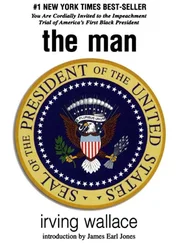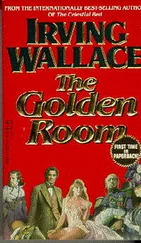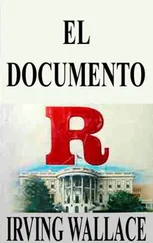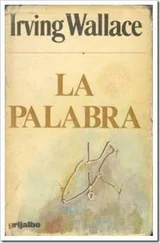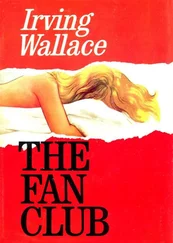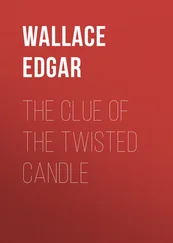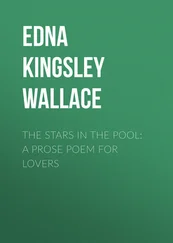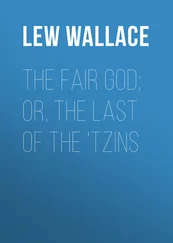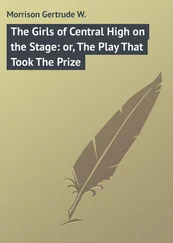Yet Jacobsson tried to judge the phenomenon fairly. This dominance was not of Farelli’s doing. It was invited, nay, desired, by the dozen journalists. In the Italian they sensed excitement, and they wanted to draw upon it and inject it into their routine accounts, so that their stories would be as alive as their subject.
Jacobsson pondered the possible results of this group interview. Did Dr. Garrett realize that he was being made as extinct as the dodo bird? Did he realize what was happening to him?
On the sofa, melted into the fabric, nearly vanished, Dr. John Garrett felt no pain. From the second that he had been introduced to Farelli, his immediate surface anger and antagonism had been blotted up and absorbed by the Italian’s overpowering charm. Thus drained of righteous indignation, he was less man than automaton.
When the interviewing had begun, Garrett had been offered his fair share of questions, and had answered them simply, but then there had been fewer questions, and finally none, as if the audience had made a choice as to the player they preferred. Now all questions were being directed at Farelli, and all replies were being given by him. Oddly, Garrett experienced apathy, not rebellion. To join Farelli, to participate, would seem to be intruding on an enchanting Pirandello play. Gradually, Garrett had become so mesmerized by the Italian’s words and histrionics that he felt he no longer shared the laureate sofa with him, but rather belonged apart, to the press audience, logically listening with them.
Even now he listened, still bound helplessly in the same hypnotic trance of inferiority, as if his contribution to their great work had been a minor accident, and now he wished to make amends through apologetic silence.
‘One asks oneself, after all, what is this organ, the heart, that it is so difficult to replace?’ Farelli was saying. ‘It is a simplified pump, a hollow muscular bag somewhat larger than a tennis ball or my fist, weighing no more than ten ounces. Seventy-two times a minute it beats, perpetually beats, and through it, each minute, pass six quarts of blood. One sees that in its design the heart is simple to duplicate, yes? Though, do not be fooled by its simplicity. For sixty or seventy or eighty years, it pumps with no rest. Where can one buy a machine guaranteed to pump for sixty-seventy-eighty years without failing once?
‘Both Dr. Garrett and I fell into the error of trying to find such a man-made machine to use as a model, a machine that would equal or surpass the living heart. There were many models, of course. For several decades, scientists have been constructing artificial hearts to perform outside the body. One remembers the year 1935, when Dr. Alexis Carrel admitted that he and Colonel Charles Lindbergh had kept alive an animal organ with the first artificial heart made of a pump and coiled glass tube. One remembers Dr. John H. Gibbon, of Jefferson Medical College in Philadelphia, who was among the first, possibly the first, to employ an artificial heart-and-lung machine on a living patient, to keep the patient alive forty-five minutes, while surgery was being done. One remembers Dr. Leland C. Clarke, in Yellow Springs, Ohio, who kept a fireman alive seventy-five minutes with a heart-and-lung machine, while chest surgery was completed.
‘In the world, there have been thirty or forty such artificial heart devices. And other remarkable cardiac devices, too, such as the recent electronic pacemaker. One saw the brilliance of these efforts, and the progress made, but still one-who was a perfectionist-despaired. For all of these machines were temporary devices outside the human body. They could not, in any form, be trusted inside the body-and will not be trusted, until we have discovered perpetual motion. Dr. Garrett and I saw that the practical heart, the one that might prolong or even double longevity, must be alive and mammalian and in the image of the human heart. Here was a goal for a Dr. Frankenstein-but where, my friends, where in the medical profession, was there a Mary Shelley?’
Farelli had spread his broad palms in a gesture of helplessness, and the audience, almost collectively, sighed in distressed understanding of his problem, as a theatre audience might sigh at the dilemma of the beset hero. Farelli cast a friendly glance at Garrett, who sat agape, like a boy child waiting for Father to turn the page.
Farelli met the attention of his audience again. He would not let slack the communicative bond between them. ‘The goal was clear, but so, also, were the steep hurdles. What kept us from grafting lower mammalian hearts into human bodies? Preliminary attempts had been made on dogs, in England, in America, and the animals had survived three weeks. Why not men and women? The hurdles were these-to find an animal heart of similar structural design to the human heart, to find a means of storing this organ, to find a workable operative technique, to find a way of preventing irreversible ischemic damage to the transplanted heart-yes, I could go on and on. These were hurdles, but they were not the largest. The largest was the one I speak of last-to find means of preventing the rejection mechanism of the cells from marching out to attack and crush all invading material trying to enter the body.
‘Those of us who dreamed of an eternal body spent our long nights of lonely strategy devising means to overcome these hurdles. In the Istituto Superiore di Sanita, in Rome, I did my research and experiments. In the Rosenthal Medical Centre, in Pasadena, my admirable colleague, Dr. Garrett, did his research and experiments. We met our difficulties, one by one through the years, and we overcame them. Blood for the brain during surgery? We used a plastic booster heart, a pump oxygenator, outside the body. Clotting? Anticoagulants, of course. The replacement heart? One grafted from a mammal near the weight of the patient. Storage of the replacement heart? Perfusion and cooling, now useful for several hours, but already progress is being made on a special drug which will arrest metabolism. Suturing of blood vessels? Prosthetic materials like Teflon or dacron, or sometimes spare blood vessels from human cadavers. Technique of suturing? Our adaptation of a vessel-suturing instrument, resembling a miniature sewing machine, first used by the Russians at the Sklifosovskii Institute. And the rejecting mechanism? Ah, here the fight was the longest. We employed massive radiation, various radiomimetic drugs, steroids-and discarded them-and went on-and in the end we found the combination, Dr. Garrett in Pasadena, and I in Rome, to neutralize the enemies of our transplanted hearts. We found what my colleague has so aptly named Anti-reactive Substance S.’ He paused. ‘I have been too verbose for your purposes-and too brief for mine-but that is the answer to what was asked, that was our long road to Stockholm.’
Farelli settled back and enjoyed the intermission of journalists recording his story.
Garrett, bewildered and muted by the Italian’s glib locution, watched Farelli find a lozenge and place it on his tongue. Spread before him, Garrett observed the reporters writing. What were they writing? Farelli said, Farelli said, Farelli said, the renowned Farelli, the incredible Farelli, the genius Farelli. In the centre row, a lady’s hand waved, her bracelet jangling.
Garrett stirred himself from the long sleep. ‘Yes?’ he called out weakly.
‘Dr. Farelli-’ replied the lady’s masculine voice. Her demand buried Garrett deeper into the obscure corner of the sofa.
‘Dr. Farelli, I am Stockholms-Tidningen ,’ she said. ‘I would like from your own lips the story of your first successful case.’
‘You have all read about it,’ said Farelli with a self-depreciating gesture. ‘It has been made romantic enough.’
Читать дальше

